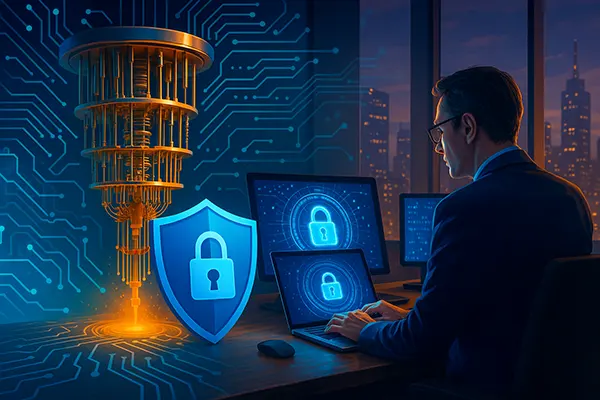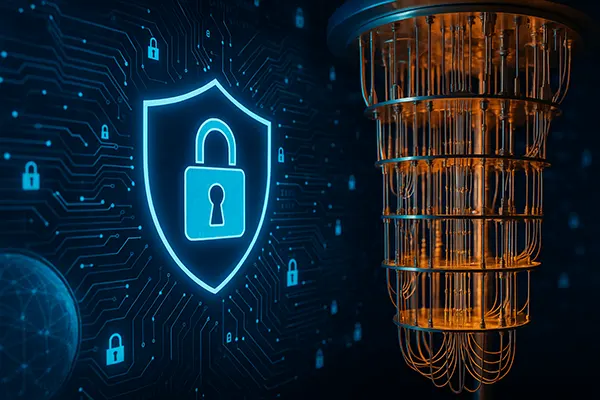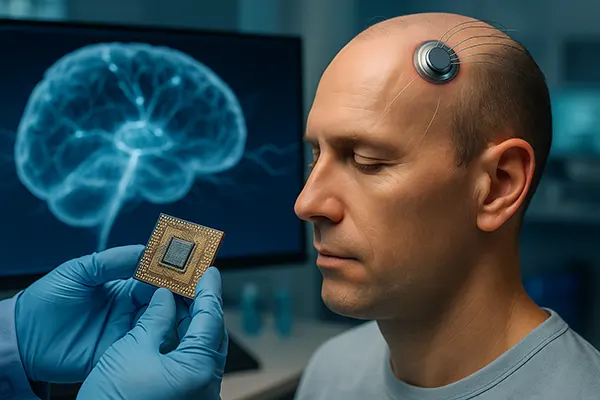Cybersecurity in the Quantum Computing Era: Business Challenges and Solutions

The rise of quantum computing promises to revolutionise industries across the globe, but it also brings unprecedented threats to modern cybersecurity infrastructures. Traditional encryption methods, once considered unbreakable, may soon become vulnerable, forcing businesses to rethink how they protect their data and operations. As of February 2025, leaders in the field are already preparing for the inevitable shift towards post-quantum security frameworks.
Understanding the Quantum Threat to Cybersecurity
Quantum computers, unlike classical machines, can process vast amounts of information simultaneously due to principles such as superposition and entanglement. This capability threatens to dismantle RSA and ECC encryption standards that secure most digital communications today. The algorithms behind these standards rely on the computational difficulty of factoring large numbers—something quantum computers could achieve in minutes using Shor’s algorithm.
For businesses, this translates to an urgent risk: encrypted customer data, confidential contracts, and intellectual property could all be exposed. Even data encrypted today could be intercepted and stored by malicious actors for decryption once quantum capabilities become mainstream—a concept known as “harvest now, decrypt later.”
By February 2025, industry experts have noted a growing number of proof-of-concept quantum attacks in laboratory environments. While large-scale attacks are not yet feasible, the pace of quantum development demands that businesses start implementing countermeasures now.
Evaluating the Business Impact of Quantum Vulnerabilities
Organisations that rely heavily on cloud computing, financial transactions, and digital identity verification are particularly exposed. If encryption fails, so do the foundations of trust that underpin modern digital economies. For example, banks would be unable to guarantee the integrity of electronic transfers, and healthcare systems could see patient data leaked on an unprecedented scale.
The reputational damage resulting from such breaches is equally concerning. Consumers and stakeholders expect proactive risk management; any delays in transitioning to quantum-resilient solutions may result in legal liabilities or loss of business. According to a report published by ENISA in early 2025, quantum-resistance is now a compliance concern in several EU regulatory frameworks.
Insurance providers are also reassessing cybersecurity risk models. Policies may soon exclude quantum-induced breaches unless specific safeguards are in place. This change puts pressure on executives and CISOs to integrate quantum awareness into their strategic planning and budgeting cycles immediately.
Post-Quantum Cryptography: The Road Ahead
In response to these looming threats, research institutions and security agencies have accelerated efforts to develop and standardise post-quantum cryptographic (PQC) algorithms. The U.S. National Institute of Standards and Technology (NIST) is leading this effort and, as of February 2025, has released draft standards for several quantum-safe encryption methods, including CRYSTALS-Kyber and CRYSTALS-Dilithium.
These algorithms are designed to resist both classical and quantum attacks, allowing organisations to build forward-compatible infrastructures. Technology vendors such as IBM and Microsoft have started integrating PQC into their cloud environments, offering businesses an accessible pathway to futureproof their systems without disrupting current operations.
Despite these advancements, challenges remain. PQC algorithms often require more computational power and bandwidth, posing efficiency concerns. Additionally, migrating large systems to new encryption models is a complex process involving key management, user authentication protocols, and hardware upgrades.
Steps for Implementing Quantum-Resistant Security
The first step for any business is to conduct a quantum risk assessment, mapping out which systems and data flows rely on vulnerable encryption. From there, organisations should prioritise their most critical assets and begin testing quantum-safe alternatives in controlled environments.
Next, updating digital certificates and public key infrastructures (PKI) with support for PQC is essential. Businesses should work closely with vendors that are already compliant with NIST recommendations and offer scalable migration tools.
Education and training are just as crucial. CISOs must ensure that IT and development teams understand the implications of quantum computing and are equipped to implement resilient solutions. External audits and collaboration with cybersecurity consultants can further validate the robustness of new frameworks.

Industry Collaboration and Future-Proof Strategies
Quantum threats are not confined by industry or geography. Therefore, international cooperation is essential. Government agencies, private corporations, and academic institutions are increasingly forming alliances to share best practices and research breakthroughs in post-quantum security.
The European Union’s Digital Europe Programme, for example, has earmarked funding for cross-border initiatives aimed at enhancing PQC adoption among SMEs. In Asia, Japan’s National Institute of Information and Communications Technology (NICT) is collaborating with private telecom companies to roll out quantum-safe communication protocols across major cities.
Long-term, businesses must adopt an agile and layered approach to cybersecurity. This includes investing in quantum key distribution (QKD) where feasible, adopting hybrid cryptographic models that combine classical and quantum-safe algorithms, and maintaining regular reviews of threat intelligence to adjust strategies as the technology landscape evolves.
Positioning for the Post-Quantum World
Preparing for quantum computing is not an optional future endeavour—it is a present-day necessity. Businesses that act now will not only safeguard their digital assets but also position themselves as leaders in a rapidly changing cybersecurity paradigm.
By February 2025, early adopters have already started piloting quantum-safe networks and reaping the benefits of increased trust from clients and partners. This momentum is creating new market opportunities and redefining competitive advantage in sectors such as finance, telecoms, and critical infrastructure.
As we stand at the cusp of a new era in computing, businesses must embrace a mindset of continuous adaptation and collaboration. Those that build resilient, quantum-aware infrastructures today will be the ones to thrive tomorrow.







